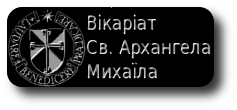
Church Gives Final OK to Neocatechumenate
Category:
- Neocatechumenate
VATICAN CITY, JUNE 13, 2008 (Zenit.org).- The definitive approval of the Neocatechumenal Way's statutes is a moment of joy, both for the ecclesial group and for the Church itself, said Cardinal Stanislaw Rylko.
The president of the Pontifical Council for the Laity said this when he gave the official approval decree today to the founders of the Neocatechumenate, Kiko Argüello and Carmen Hernández, with Father Mario Pezzi.
At the end of the ceremony, Cardinal Rylko explained the meaning of the recognition: "It signifies the confirmation on the part of the Church of the authenticity and genuine character of the charism found in its origin, in the life and in the mission of the Church."
The cardinal told those present at the ceremony: "The Way already has a long history in the Church -- more than 40 years -- and brings to the Church's life many fruits, many profoundly changed lives, many rebuilt families, many religious and priestly vocations, and much commitment in favor of the new evangelization.
"Therefore, it is a moment of great joy for the Church, and a moment of great joy for the ecclesial reality that it [should receive] this recognition."
Cardinal Rylko offered three specific guidelines to members of the Neocatechumenal communities: obedience to bishops, acknowledgement of the role of the presbyter, and fidelity to the liturgical texts of the Church.
In his response, Argüello thanked Benedict XVI, and Popes John Paul II and Paul VI. The latter, he recalled, said to him on one occasion: "Be humble and faithful to the Church and the Church will be faithful to you."
For her part, Hernández stressed that what is important is not the Neocatechumenal Way, but the Church, and invited the members of this movement of Christian initiation to practice humility.
Afterward, the Way's initiators gave a press conference to manifest their gratitude to the Holy See. It was held at the diocesan center of the Neocatechumenal Way, next to the Vatican.
Argüello revealed that at present, the Holy See is studying the texts of the Way's catecheses, so that they can be made public and distributed to parishes worldwide.
According to Arguello, the only significant change that the definitive statues introduced in regard to the liturgy affects the way of receiving Communion.
In keeping with the communities' usual practice, Communion will continue to be received under both species and will be distributed by ministers in the assembly, instead of the procession of the faithful typical in the Roman rite.
This practice is kept in the definitive statutes, but for the reception of the Host, the faithful will stand before the minister. This is not the case in receiving the Chalice, which will continue to be received seated, to avoid spilling the precious Blood.
Moreover, the kiss of peace will retain its place following the Prayer of the Faithful and before the beginning of the Eucharistic liturgy, though procuring that this moment not break the order and recollection of the assembly.
This final approval of the statues follows an approval "ad experimentum" granted in 2002.
http://zenit.org/article-22897?l=english














